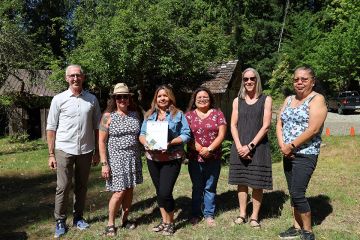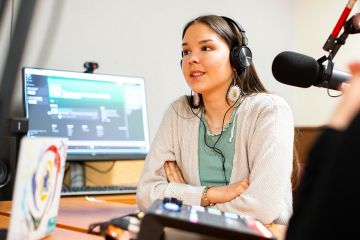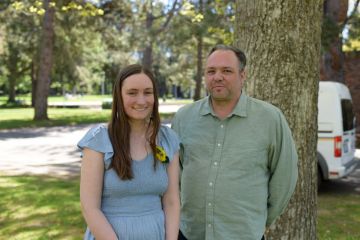Indigenous law scholar leads a quiet revolution in Canadian history
- Suzanne Ahearne

Where John Borrows comes from in Ontario, the Anishinaabe call warm, late-spring weather aabawaa. As things begin to melt and flow again, the meeting of hot and cold air masses can make it foggy and difficult to see. In Ojibway, the word for this weather phenomenon also makes its way into the language of human relationships and legal practice: aabawaawendam means forgiveness.
“With forgiveness, as with the land, there are mists between people,” says the Canada Research Chair in Indigenous Law and 2017 Killam Prize winner in Social Sciences for his scholarship and commitment to furthering our knowledge about Indigenous legal traditions.
“The word refers to a time when you can’t yet see clearly. But as the ice and snows recede, it’s time to begin to reconstruct your relationship given what happened in the winter of your conflict.”
It’s a fitting analogy for where we are in the process of rebuilding relationships between Indigenous and non-Indigenous Canadians, and of redefining Canadian law so that Indigenous legal traditions are reestablished and given equal footing with common law.
To understand the principles of law at work in Indigenous traditions, to be able to read nature for lessons in respect, equality and the security it provides, requires a shift in thinking and a different kind of literacy. Borrows calls this process “drawing the law out of the land.”
When we think about law, we might think of a court process or lawyers and judges and their focus on words. But in visual and oral cultures, the law is often found in the artistic and physical world, explains Borrows, who is Anishinaabe/Ojibway and a member of the Chippewa of the Nawash First Nation.
Primary Indigenous law research, such as the work led by Borrows and colleagues at UVic, involves documenting ceremonial dances, cultural practices such as the potlatch, origin stories, contact stories about settlers, totems, wampum belts and other artistic works, and then teasing out the legal principles and precedents embedded within them.
One of the goals of this research, he says, is to change a misunderstanding held by some who think there’s no such thing as Indigenous law: either Indigenous people never had legal systems because they were primitive in some respect; or if they had them, they’re broken and gone, or irrelevant in a modern context.
Borrows also points out that, with 150 years of repression of Indigenous people in Canada, it’s been hard to apply Indigenous law in contemporary circumstances. The revitalization of Indigenous legal traditions is creating pathways out of an era of control, into an era of shared autonomy and responsibility.
To assist this process, he’s currently working with faculty colleague Val Napoleon to develop a joint degree in Indigenous legal orders and Canadian common law (JID) at UVic—the first in the world.
The proposed degree will be unique, training students to understand Indigenous legal orders, build institutions based on those orders, and design institutions and procedures that work in concert with other levels of Canadian law, benefitting areas such as child welfare, education, health, housing and resource development.
Borrows is UVic’s second Killam Prize winner—after political theorist James Tully (2010)—in the 50-year history of the award, which is given out annually by the Canada Council for the Arts. He received a $100,000 prize on May 30 at Rideau Hall in Ottawa.
Photos
Videos
In this story
Keywords: Indigenous, law, award
People: John Borrows







